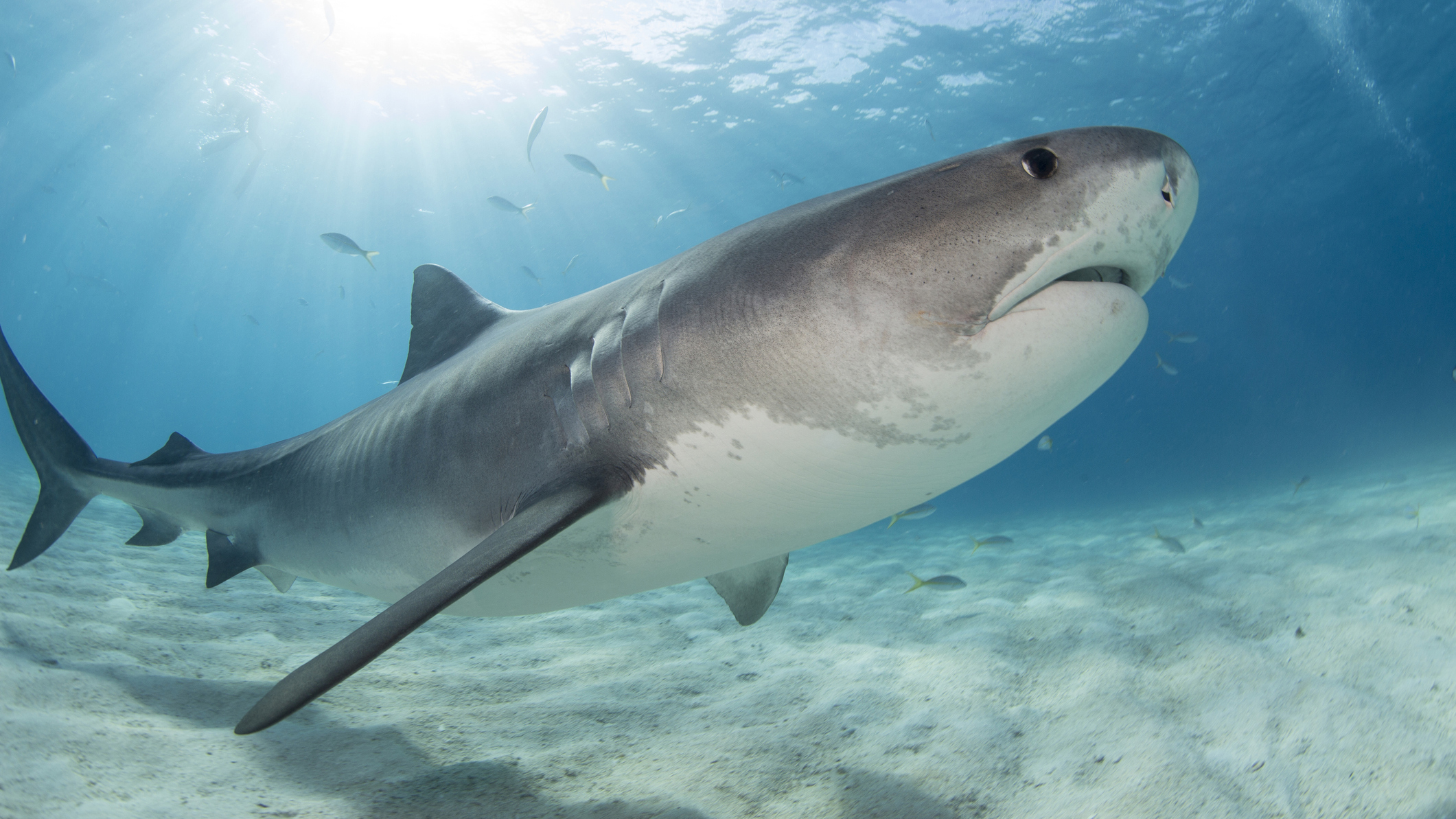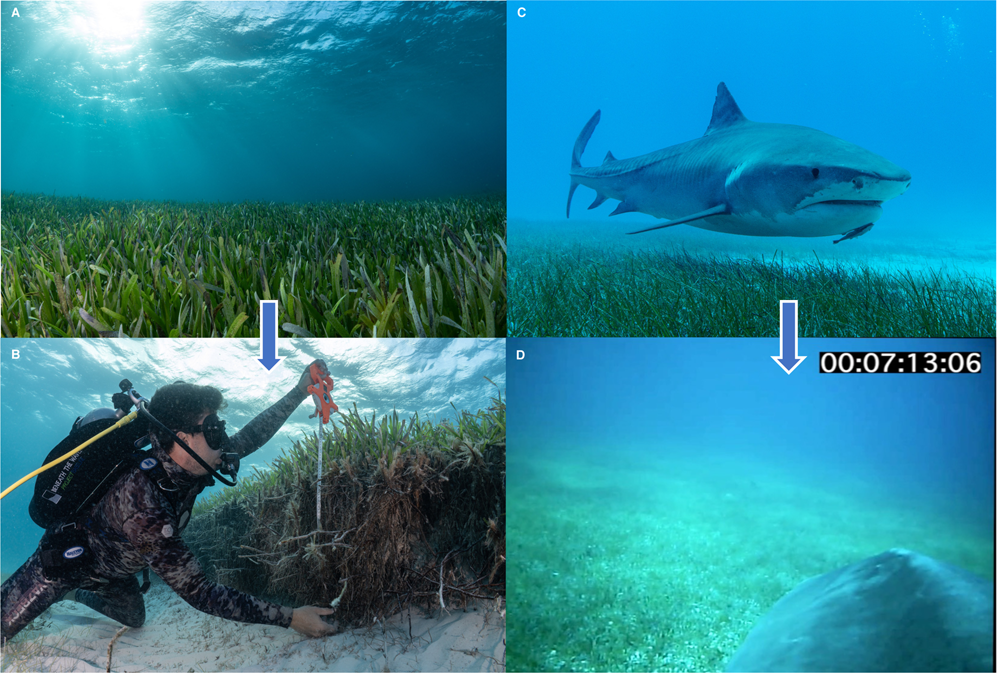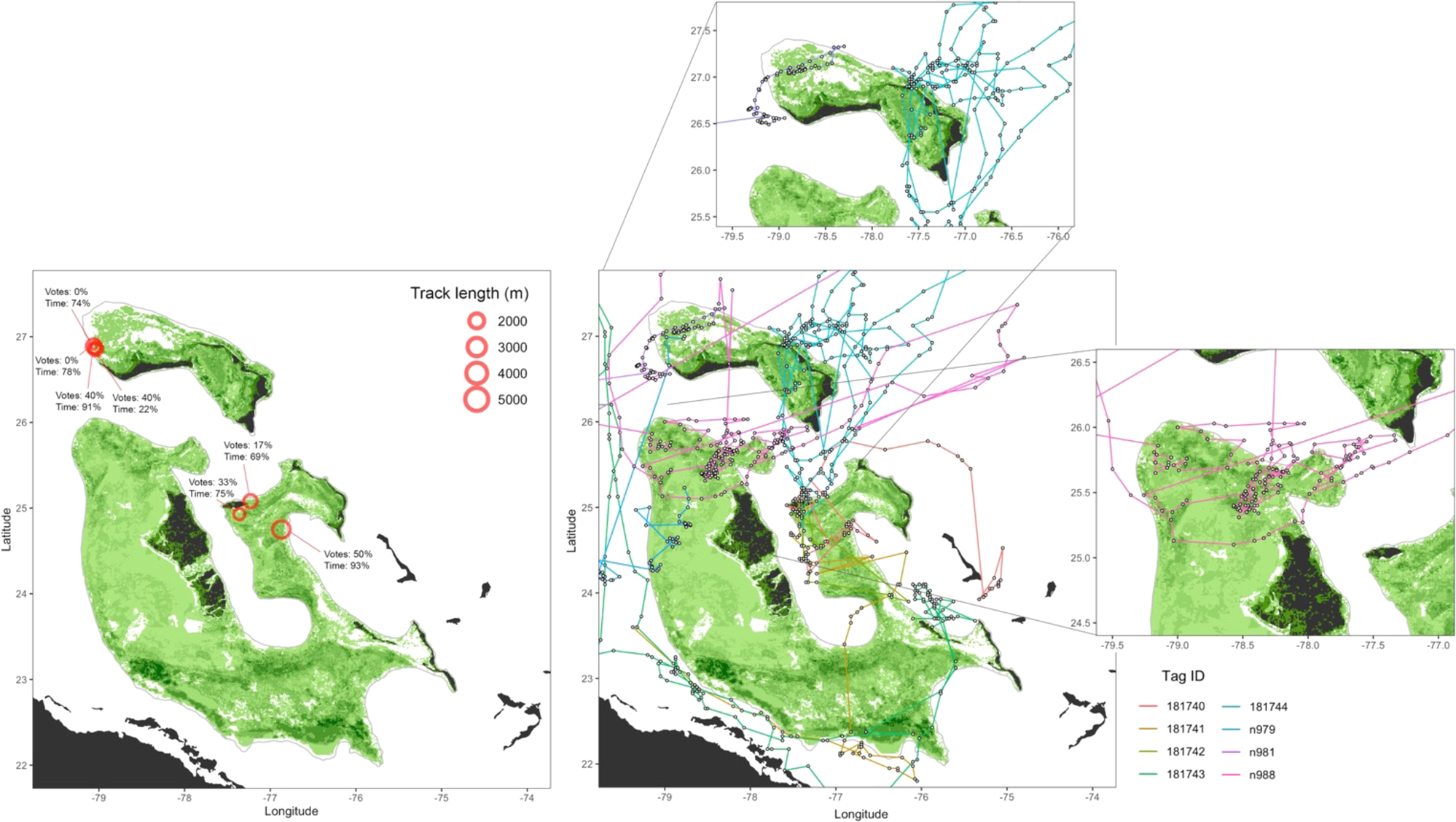Scientists are strapping cameras onto Tiger Sharks to discover new seagrass
Having a camera strapped to the dorsal fin is no biggie for these fearless sharks turned data collecting marine scientists

Good news for the climate, as a hefty meadow of Seagrass has been discovered by a team of marine scientists and researchers. Located in The Bahamas, this newly found blue carbon ecosystem of aquatic flowering plants is now the largest known in the world, and was discovered thanks to the help of Apex predator Tiger Sharks.
This new study published by marine scientists details how the team found a safe way to equip the help of tiger sharks by fitting cameras and trackers to their dorsal fins, providing invaluable footage, mapping, and movement data to aid in determining the whereabouts of seagrass, its extent, and distribution.
• These are the best underwater drones
The Study published in Nature Communications reveals that researchers used "instrument-equipped" tiger sharks to obtain crucial data, strapping cameras securely to the dorsal fins of the mammals, and supposedly chose these predators specifically in relation to their proven fidelity, strong habitat selection, and high consistent associations with seagrass ecosystems across the globe.
Seagrasses collect large amounts of organic carbon, which the plants trap and harbor in sediment, making the conservation of seagrass absolutely critical for reducing the impacts of climate change on our world.
Research teams tagged and tracked 15 individual, free-swimming tiger sharks located on the Great Bahama Bank and Little Bahama Bank with satellite tags to estimate data on geolocation and vertical habitat preferences.
The research paper also suggests that eight tiger sharks were equipped with satellite tags only, as well as seven sharks that had been equipped with biologging camera tag packages to assess what is known as a benthic habitat type. The study saw the first-ever deployment of a 360-degree camera being borne by a marine animal, and this innovative research element has certainly paid off.
The best camera deals, reviews, product advice, and unmissable photography news, direct to your inbox!
The intelligent tiger sharks gathered hours of reliable seafloor imagery and footage for researchers and scientists to utilize, having traversed 4177 km on both regions of The Bahama Banks, and up to 11.3 km per day surveyed by the sharks that were fitted with cameras.
The article and study suggest that the application of animal-borne camera tags offers a unique opportunity for scouting areas that humans and divers cannot survey, as these highly mobile animals can move greater distances over short periods of time, without the need for an air-break, and are not limited by human constraints.
Researchers supposedly used a combination of existing spatial estimates, with processes that involve remote sensing, extensive ground-truthing of the seafloor, and data from 2,542 diver surveys - with that of the data gathered by the camera-fitted tiger sharks, to map out the Bahamas seagrass ecosystem patch, estimating that it could be as large as 35,521 square miles, or at least 66,900 km2 .
Thanks to the marine vlogging efforts of the tiger sharks, researchers were able to gather evidence of major knowledge gaps present in the ocean ecosystem, as well as obtain a greater understanding of the benefits of partnering with marine animals to address these gaps, and finally, highlight the importance of rapid protection for oceanic carbon sinks.
The team noted that highly mobile fishes, and green turtles, could serve as critical allies in future research and in guiding the discovery of novel seagrass ecosystems. The study states:
"Pooling tiger shark and human efforts, we assembled one of the largest and most innovative seagrass survey efforts undertaken to date, with robust ground truthing supporting the designation of The Bahamas Bank as the largest seagrass ecosystem on Earth. These findings have broad implications for estimates of global carbon storage while highlighting the role of highly mobile animals as powerful surveyors of expansive ocean habitats."
You can see the full research study on Nature Communications.
You may also be interested in these guides to the best underwater fishing cameras, as well as the best underwater housings for cameras and phones. Check out this TikTok video that captures 12ft shark attack, and see our review of the SeaLife Micro 3.0 underwater camera.

Beth kicked off her journalistic career as a staff writer here at Digital Camera World, but has since moved over to our sister site Creative Bloq, where she covers all things tech, gaming, photography, and 3D printing. With a degree in Music Journalism and a Master's degree in Photography, Beth knows a thing or two about cameras – and you'll most likely find her photographing local gigs under the alias Bethshootsbands. She also dabbles in cosplay photography, bringing comic book fantasies to life, and uses a Canon 5DS and Sony A7III as her go-to setup.


